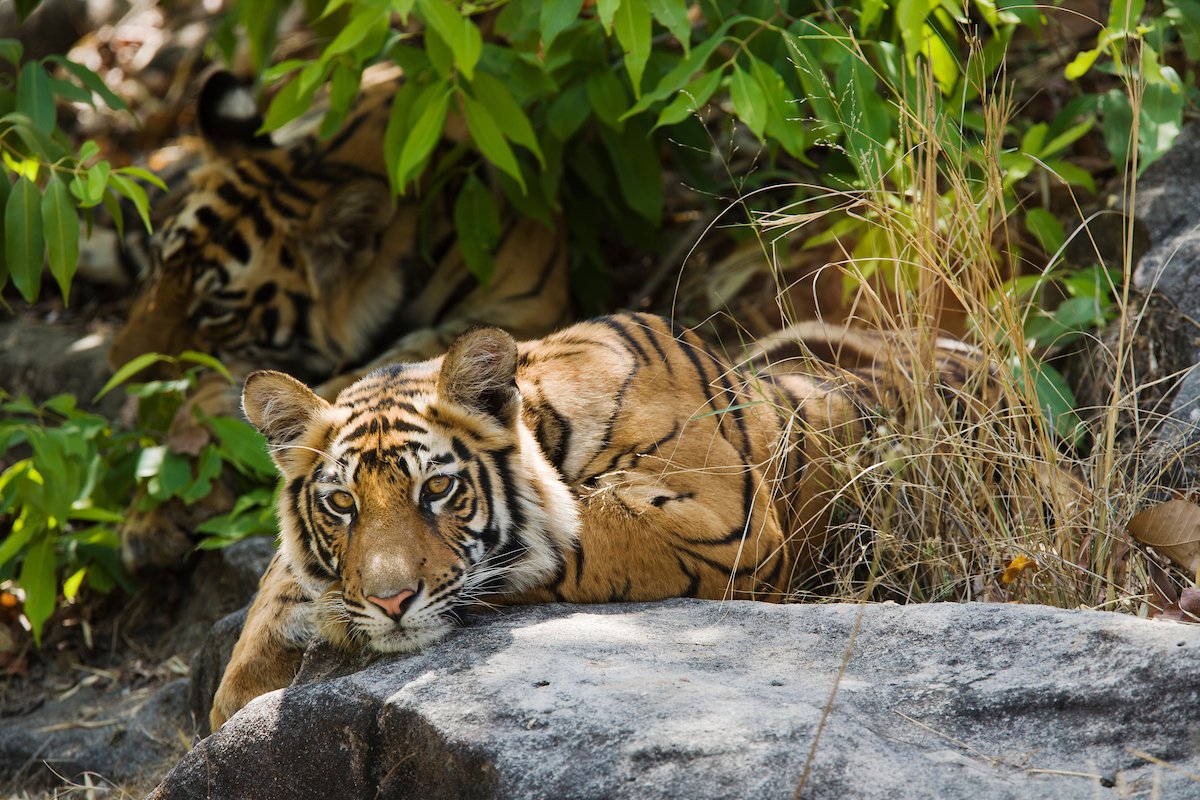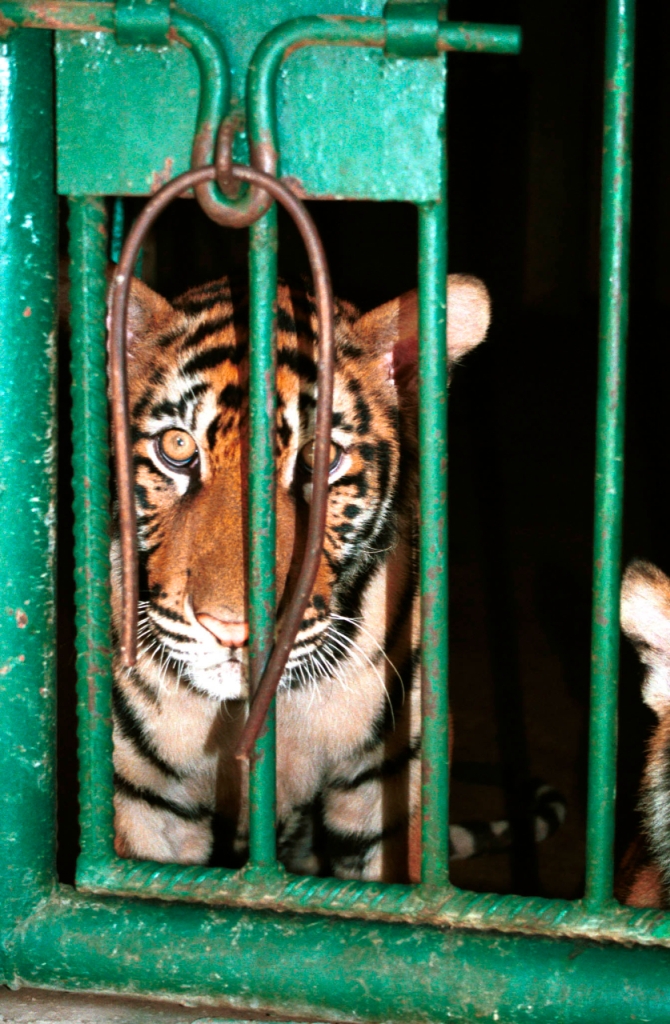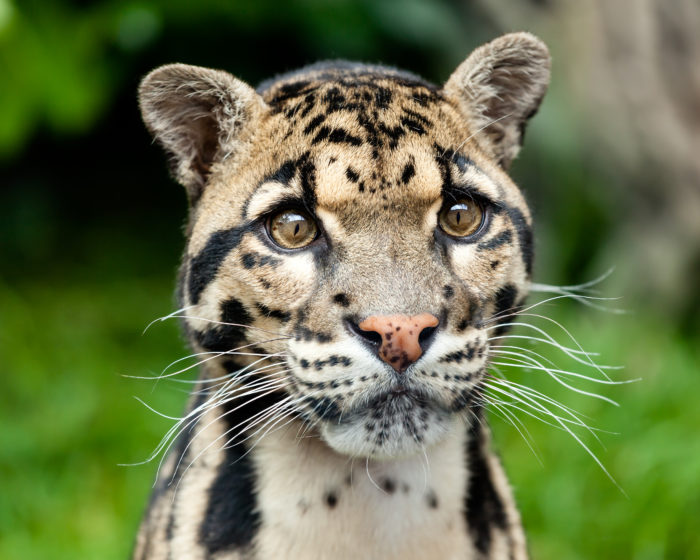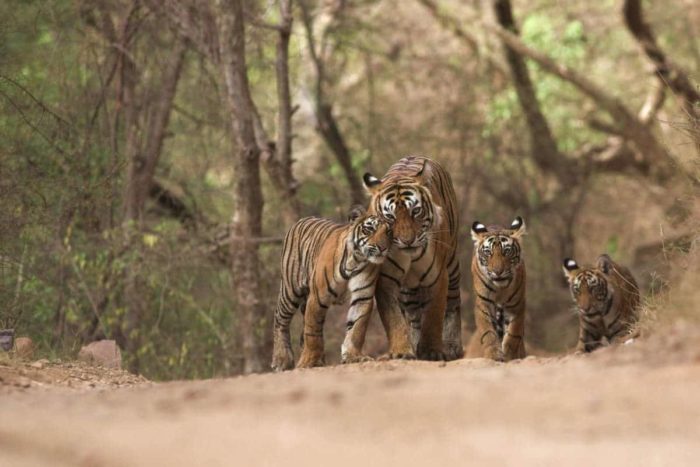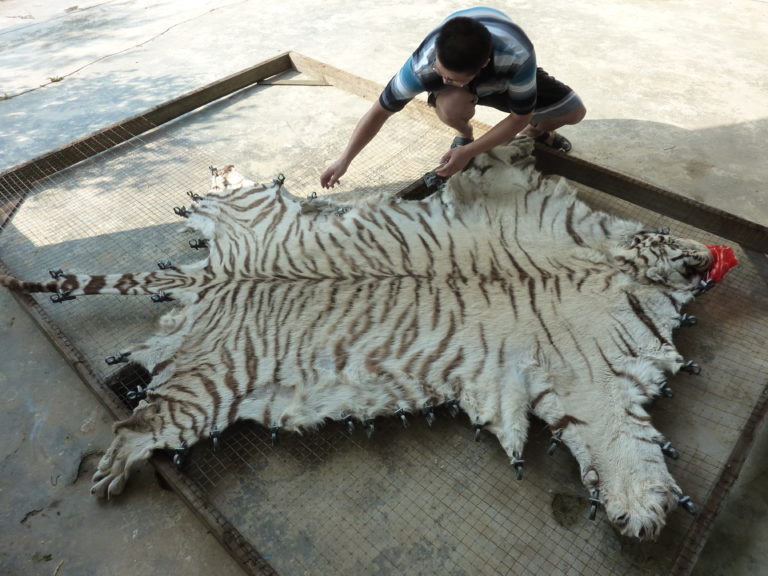The cruel trade in captive-bred tiger cubs

Dead tiger cubs offered for sale on WeChat by Vietnamese traders and, right, the end product, tiger cub wine
On these farms, tigers live out their lives in cages – a tiny space for an animal whose territory in the wild might cover a hundred square kilometres. Sadly, because of these cruel, unnatural conditions, poor diet and inbreeding, there is often a high infant mortality rates and many cubs perish.
Shockingly, traders still find a way to use dead cubs for profit, even those that were only a few days old, in the illegal manufacture of ‘tiger cub wine’. Dead cubs are frozen by traders to preserve them until they reach their final destination. Our investigators have witnessed the carcasses of tiger cubs soaked in wine vats with other ingredients such as snakes, scorpions and bears paws, to be sold as a traditional ‘remedy’.
Some of the cubs that survive will stay at the facilities where they were born. But surplus live cubs pass into the cub trade. EIA investigators have been working with local partners to trace the routes used by wildlife traders to smuggle live tiger cubs between China, Laos, Thailand and Vietnam. Our work is helping to gather evidence that we can pass on to law enforcement agencies, helping to disrupt the criminal networks behind this deadly trade.
China’s tiger farms fuel the tiger trade
China’s massive tiger farming industry, with an estimated 5,000-6,000 tigers in captivity, is a source for tiger parts and products entering trade. Contrary to the assertions of pro-tiger farming advocates, tiger breeding facilities have increased pressure on wild tigers, not reduced it.
Sadly, consumers continue to prefer wild tiger products, which means it is profitable for criminal networks to continue poaching and trafficking. As a result, criminal networks expand as far as India, Myanmar, Malaysia and Nepal to supply wild tiger body parts for consumers demanding the ‘authentic article’.
There are a further 2,000+ tigers in captivity in Laos, Thailand and Vietnam, including in facilities that have been implicated in transnational wildlife trafficking and are affiliated to Chinese and Vietnamese criminal networks.
Battling rampant and growing demand in China
The Chinese Government is doing little to stem the rampant demand for tiger parts that drives its tiger ‘farming’ industry and threatens the very existence of wild tigers. This inaction makes it clear that protecting tigers is far from a priority for China.
The sale of tiger skins is effectively legal and the official ban on the use of tiger bone in traditional medicines and remedies – already undermined by widespread illegal trade – was repealed altogether in 2018. Without a new ban or a change in the law, the tiger is not safe in China.
EIA continues to expose the ugly truth behind China’s tiger farm industry and consistently lobbies the Chinese Government to phase out tiger farms altogether.
Raising awareness of the dangers of tourist attractions in Thailand
Thailand is known for tourist attractions where visitors can pose for ‘tiger selfies’ or bottlefeed tiger cubs, unaware that many of these facilities are secretly selling dead cubs, and parts from dead tigers, onto the black market.
Recent field work by our partner, Wildlife Friends Foundation Thailand, suggests the number of tiger farms in Thailand is bigger than we’d thought – and growing. These farms supply live and dead cubs which are smuggled to other facilities in Thailand and across the border via Laos into Vietnam.
As part of our work in protecting tigers, to raise awareness of the detrimental effect on tigers of so-called farms and zoos, we encourage people not to pose for pictures with tigers.
Tracking illegal trade by the back door in Laos
The Government of Laos made a commitment to phase out tiger farms in 2016, which we welcomed at the time. But since then, these farms have been allowed to convert into tourist attractions instead of closing.
We warned the international community that the farms are run by criminal enterprises and would likely continue their illegal trade by the back door. In July 2019, we were sadly proved right when seven dead tiger cubs from one of the Laos farms were seized by law-enforcement officials in Vietnam.
Our work protecting tigers in Laos includes documenting ongoing illegal trade in tigers and tiger products and reporting our findings to law enforcement agencies.
Uncovering the basements where tigers are slaughtered to order in Vietnam
Vietnam has tiger farms and also, more critically, a massive problem with cruel and illegal backyard breeding of tigers for trade. Apparently ordinary rural households rear a tiger cub in a cage in their back yard or basement, feeding it up until it’s big enough to be sold for its parts.
Many have regular buyers from whom they take orders on a messaging app, smuggle the parts to the border and then courier on to the end destination. New buyers sometimes come in person to choose their tiger, watch it being slaughtered and butchered. They buy whatever tiger parts they want or wait until its bones are boiled down into ‘tiger bone glue’.
According to the traders we have engaged with undercover, there may be hundreds of these ‘backyard breeders’, but so far little law enforcement action has been taken against them.
With our partner, Education for Nature Vietnam, we continue to monitor and track the growing problem of Vietnam’s backyard tiger breeding, as well as calling on the Vietnamese Government to phase out tiger farms and prosecute individuals and businesses that are implicated in the tiger trade.


